I’m a sucker for Asian food, especially Korean BBQ. I grew up in an area with a large Korean population and had a number of Korean friends over the years, so I have plenty of fond memories surrounding this cuisine.
It’s been ages since I’ve posted a recipe, but when I posted a mouth watering photo of Low Carb Korean Beef Bowls on my Instagram & other social media pages, I got so many requests for the recipe that I knew I had to make a formal post.
As I mentioned in my original post, this recipe was a lifesaver during the first trimester, likely because of the ginger and salt. Anyone who’s dealt with nausea and food aversions knows how challenging it can be. Finding nutrient-dense meals that are both appealing AND stay down can be so helpful at a time when it feels like your nutrition has gone out the window.
Hey, first trimester is survival mode! No secret about that. If you can manage an occasional mealtime win, celebrate! By the way, if being in the kitchen is nauseating, get your partner, family member, or friend to make this FOR you—they say it takes a village and that starts *in* pregnancy.
This recipe is a spin off of Korean beef bulgogi.
My version of Korean Beef Bowls have a similar sweet marinade of ginger, soy sauce, and toasted sesame oil, but instead of using thin strips of beef, it uses ground beef.
Some recipes of beef bulgogi use a ton of sugar—we’re talking ⅓ cup or more per pound of meat—which I find both unnecessary and excessively sweet. I’d rather get my sugar from chocolate or fruit or dessert, thank you very much.
Low Carb Korean Beef Bowls uses waaaay less sugar (or none at all if you opt for stevia), but is still plenty flavorful and satisfying.
I also use cauliflower rice in place of regular rice, which slashes the carbs from 45 grams per cup (rice) to 5 grams per cup (cauliflower). This is substantial and especially worth noting if you have diabetes or gestational diabetes.
Even as someone without diabetes, my CGM experiment (in case that’s a new term, CGM = continuous glucose monitor) revealed that rice and I don’t get along very well. It’s not that I’ll never eat it again, but I do opt to eat it less often and in much smaller quantities when I do. Plus, I’d rather get the micronutrient benefits of additional vegetables in my diet whenever possible. (I hide extra veggies in the beef as well—shhh! Don’t tell!)
But hey, if you do well with regular rice or you’re in first trimester survival mode and it settles your tummy, by all means, use regular rice. Carb cravings are physiologically normal in the first trimester, as I explain in Ch 7 of Real Food for Pregnancy.
Lastly, I opt for grass-fed beef for the nutritional and environmental benefits (for more on those, see this post from my archives: 7 Reasons Grass-Fed Beef is Worth the Money).
Without further ado, here’s my recipe for Low Carb Korean Beef Bowls.
Low Carb Korean Beef Bowls
- 1 lb grass-fed ground beef
- 3 cloves garlic minced
- 1 carrot diced
- Additional vegetables, such as finely diced mushrooms, kale, onion, radishes, etc. (optional)
- 1-2 tbsp fresh ginger grated or finely minced
- 3 tbsp soy sauce or tamari
- 1 packet stevia OR 2 Tablespoons coconut sugar
- 2 tbsp toasted sesame oil
- 4 cups cauliflower “rice” (or substitute regular rice)
- green onion minced (optional for garnish)
Instructions
-
In a large cast iron skillet over medium-high heat, brown ground beef and garlic. Break up meat with a spatula and turn every few minutes until cooked through. Remove from pan, leaving any remaining grease for cooking the vegetables.
-
Add carrots and any additional vegetables to the pan along with the fresh ginger. If your ground beef was very lean, you may need to add some oil to the pan to prevent sticking (coconut oil works well in this recipe). Cook for about 5 minutes or until vegetables are cooked through, meaning soft enough to be easily pierced with a fork.
-
Return ground beef to the pan. Add the soy sauce/tamari, stevia/coconut sugar, and toasted sesame oil. Stir everything together, put the lid on the pan, and simmer for 5 minutes.
-
Serve over cauliflower rice and enjoy!
Recipe Notes
- If you don’t know how to make cauliflower rice, see this tutorial from my colleagues, The Real Food RDs. OR, you can be lazy like me and reheat frozen cauliflower rice. Most conventional grocery stores stock it now.
- If you don’t use soy products, you can use coconut aminos, but note that coconut aminos are generally pretty high in sugar and not quite as high in salt as soy sauce. That means you’ll likely need to add salt and use less sugar/stevia if you go this route.
- This is my preferred brand of stevia sweetener.
And there you have it: Low Carb Korean Beef Bowls with lots of vegetable goodness happily hiding away.
A little garnish of green onion goes a long way to brighten up this dish, but it’s entirely optional. Some sesame seeds would also be a gorgeous addition if you have them on hand.
It’s meals like this—rich in heme iron (thanks grass-fed beef!) and cooked in cast iron—that have once again helped me avoid pregnancy anemia. I managed my last pregnancy without needing any iron supplements and so far, so good in round 2. My B12 status is also awesome!
This is why I’m so passionate about getting real food knowledge into the hands of mamas-to-be. We can do SO much with food, which not only minimizes our need for expensive supplements, but also significantly reduces the chances of pregnancy complications that can result from nutrient deficiencies.
In addition to highly absorbable heme iron, beef packs a nutritional punch with B12, zinc, choline (~80 mg per 3 oz), a slew of B vitamins, and some trace minerals. Plus, grass fed beef gives you an extra boost to your DHA intake (2-4x more than grain-fed beef). It’s nowhere close to the DHA levels in seafood/fish, but every little bit counts.
If this recipe sounds good or you happen to make it at home, let me know your thoughts in the comments below.
Until next week,
Lily
PS – This meal is a hit with my toddler, so if you’re struggling to get yours to eat nutrient-dense meals with you, give this recipe a shot. For more on real food for toddlers and how to encourage mindful eating at a young age, see this post.
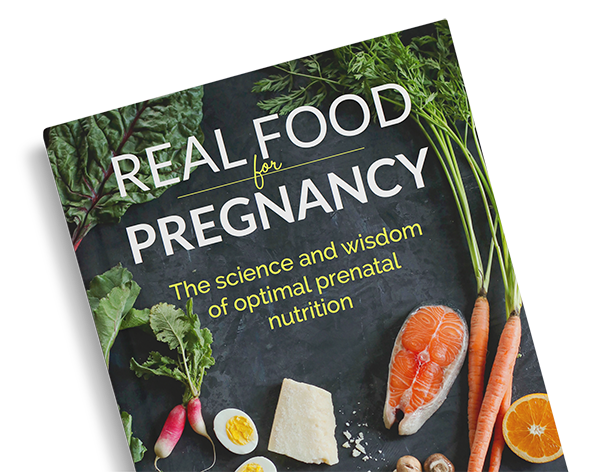
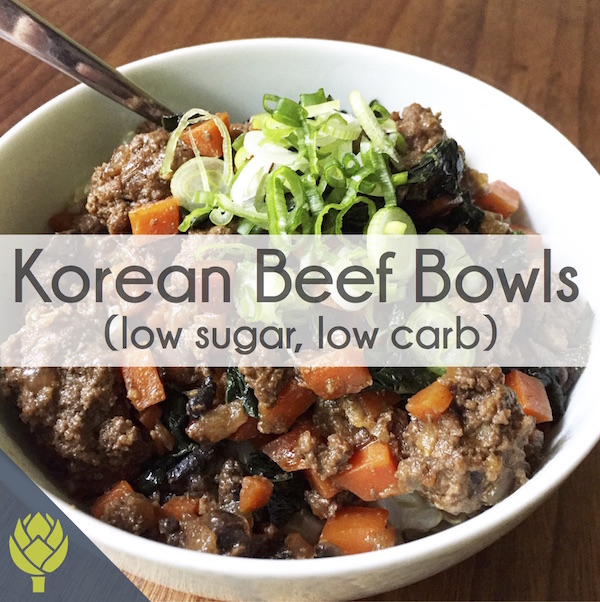
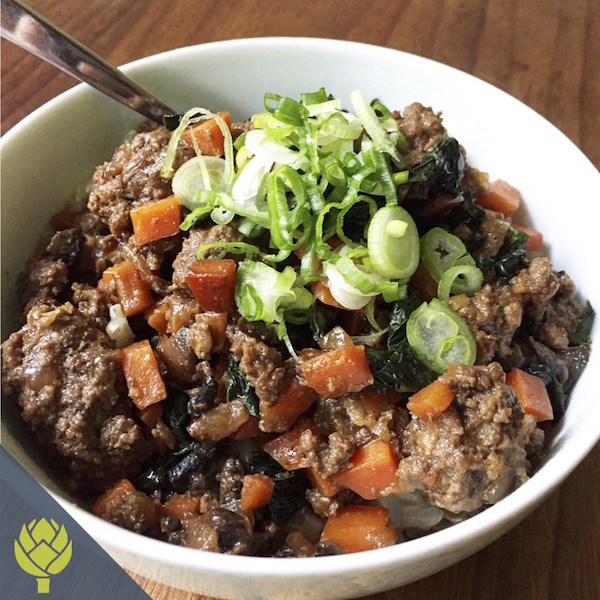
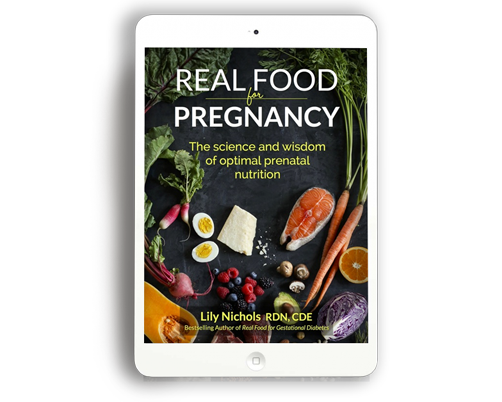


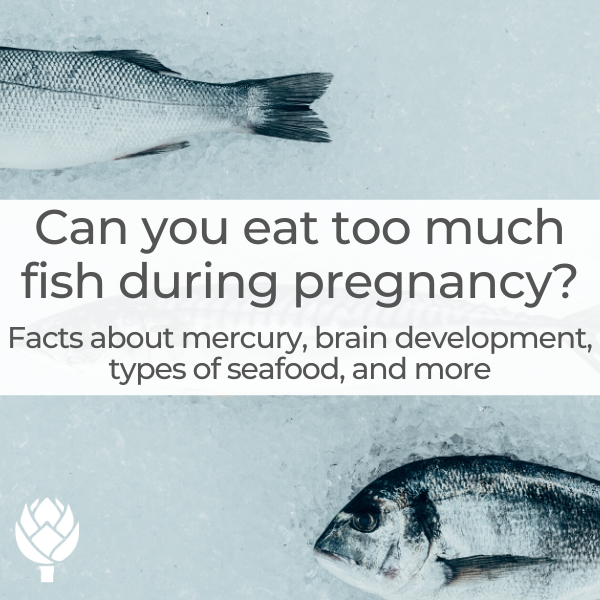


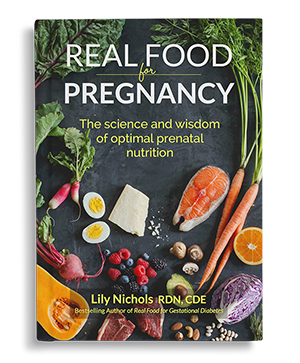
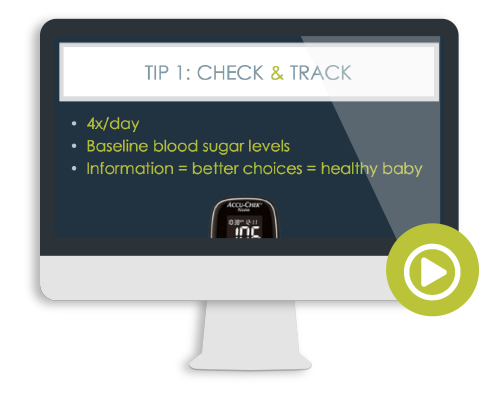
Wow, this sounds SOOOOO good! I was actually just eyeing a recipe for korean beef bowls but it had so much sugar. This is exactly what I was looking for. I’m so glad a healthy version of beef bulgogi exists. Making this for dinner this weekend.
Smart to sneak ginger into a recipe instead of relying only on ginger soda and ginger candy for nausea. Ginger has been an absolute Godsend for the past few weeks (you’re right, first trimester IS survival mode).
I’ll be trying this. Thanks for the idea!
YESSSS! Healthier Korean beef bowls. THANK YOU!!! I’ve been low carb/keto for the past few months and have steered clear of most Asian food because of how much sugar (or cornstarch) is usually in it. This is perfect.
This looks and sounds SO good! Can’t wait to try. Nutrients + deliciousness = WINNING. Thanks Lily. 🙂
Enjoy!
Can this be frozen for a postpartum meal or is better served fresh? I’m wondering if maybe I can make the marinade ahead of time and freeze it and then thaw it for a quick meal using fresh ground beef.
Thanks!
Yes, you can absolutely freeze the fully cooked recipe.
Once frozen, how would you prepare this when ready to eat it?
My preference is to defrost a previously frozen meal in the refrigerator overnight. Then reheat in a covered dish in an oven/toaster oven at 375 degrees for 15-20 minutes. Or you can reheat in a saucepan over medium heat, stirring occasionally.
Thanks for the wonderful recipe! I came across your site only yesterday, but have already found a lot of useful information and delicious recipes. Moreover – I have even tried this dish! It is really incredible! The taste is simply amazing! I am a fan of Korean cuisine, as well as you, but for me, the memories of my first acquaintance with Korean cuisine are related to our first dates with my husband) We were young and often went for dinner to a restaurant near his house. It was a Korean restaurant. Since then, my love for this cuisine began to grow at the same rate as for my husband))
P.S. I recommend everyone to try this recipe! It is amazing!
Glad you enjoyed it so much!
Hi! I like Korean cuisine ))
Thanks for this post!
I’m going to dig up some courage and try our ground beef and organs blend with this recipe. Our farmer gifted us a lb to try and I’ve been trying to find a recipe that might make it go down easier.
This recipe is a life saver, not only because it tastes amazing and is easy on my blood sugars in my third trimester, but I’m having to cook and shop for food an entirely new way thanks to quarantine. Making this recipe once a week is a great way to ensure none of the produce I order goes to waste so thank you for sharing!
I make this for my family alllll the time! It is a part of our meal rotation for sure! I love that it’s has a good amount of veggie, is low carb, and quick!
This sounds really yummy!!
Instead of cauliflower rice, we make sweet potato rice! I just quarter each potato then run it in my food processor. Cook in some oil in a cast iron pan and it’s ready in like 10 minutes. And it makes much less of a mess, in my opinion.
Hi Lily! I am 36 weeks and want to start prepping some of these meals for after baby is born. I have never frozen meals before and I was wondering if you can explain how to do it. I have read that certain things don’t freeze well. Are you supposed to freeze the cooked meal or raw chopped ingredients? Does liver pate freeze well?
It depends on the recipe, but I usually prefer preparing the whole recipe and freezing, so it simply needs to be reheated. See this article for more specifics on freezing: Real Food Postpartum Recovery Meals
I just wanted to throw this in: My aunt is Korean and live and die by her recipes. She eliminates processed sugar and sugar substitutes completely by blending a kiwi or Korean pear into a mash and using that instead. Just in case you wanted to play with your recipe!